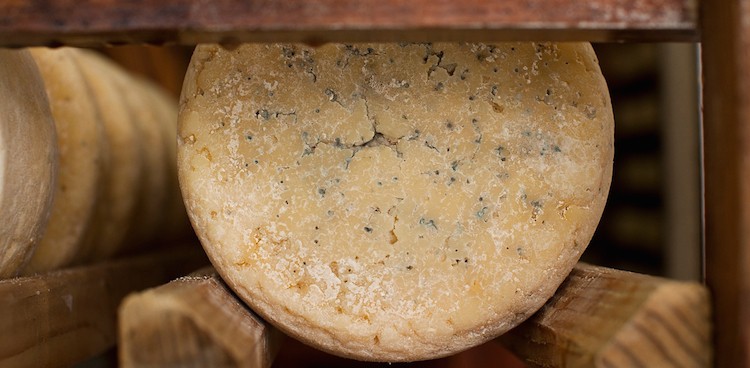
This morning culture reported on the surprising decision by the FDA to crack down on cheesemakers who use wooden boards to age their cheeses. When asked about this move, an FDA spokesperson cited the Code of Federal Regulations Title 21, Section 110.40(a) (since that’s mouthful, it goes by 21 CFR 110.40(a) when its with friends). I decided to take a look at these regulations for myself. Here’s what they say:
“All plant equipment and utensils shall be so designed and of such material and workmanship as to be adequately cleanable, and shall be properly maintained. The design, construction, and use of equipment and utensils shall preclude the adulteration of food with lubricants, fuel, metal fragments, contaminated water, or any other contaminants. All equipment should be so installed and maintained as to facilitate the cleaning of the equipment and of all adjacent spaces. Food-contact surfaces shall be corrosion-resistant when in contact with food. They shall be made of nontoxic materials and designed to withstand the environment of their intended use and the action of food, and, if applicable, cleaning compounds and sanitizing agents. Food-contact surfaces shall be maintained to protect food from being contaminated by any source, including unlawful indirect food additives.”
There are a few parts of this regulation that stand out. Most of them have to do with the concept of contamination. Basically, if I were going to summarize this piece of regulation it would go something like this: Make sure all the equipment and tools you use when making food is maintained in a way that it will not contaminate the food that you’re making. Don’t contaminate it with metal fragments. Don’t contaminate it with fuel. Seriously, dude, just don’t contaminate it.
The problem is that word “contaminants.” I’m all in favor of keeping metal fragments out of my food. But not everything is quite as black and white as metal fragments and fuel.
We need to consider what a contaminant is in the case of cheesemaking. Since in the long history of cheesemaking certain bacterial strains have been cultivated specifically to change the texture and flavor of cheeses as they age (for example, Geotrichum or Brevibacterium). We cannot consider these to be contaminants. Cheesemakers go out of their way to encourage these strains of bacteria, and you should be glad that they do! Without bacteria, cheese just isn’t cheese. You’d have no raclette, no cheddar, and certainly no limberger without bacteria.
While some bacteria is good, other types of bacteria can certainly be considered bad. This includes the dreaded and notorious Listeria. And to combat bad bacteria, the best defense is a good offense. (In fact,this is the whole point of the FDA’s new Food Safety Modernization Act. On their website it even has this quote, “It aims to ensure the U.S. food supply is safe by shifting the focus from responding to contamination to preventing it.”) Cheesemakers need to maintain heathy amounts of “good” bacteria in order to prevent colonization by the real contaminants, bad bacteria that can make you sick.
In a nutshell, I think that’s what this controversy is about: What is a contaminant in cheesemaking? Once you’ve decided on that, you can decide whether or not aging cheeses on wooden boards is going to contaminate them or not. Personally, as a lover of artisan cheese, I’m good with wood.





Here is a petition on Whitehouse.gov asking the FDA to rescind this new rule. https://petitions.whitehouse.gov/petition/lift-fda-restrictions-ripening-cheese-wooden-boards-which-will-devastate-american-craft-cheese/JXNNnM7x